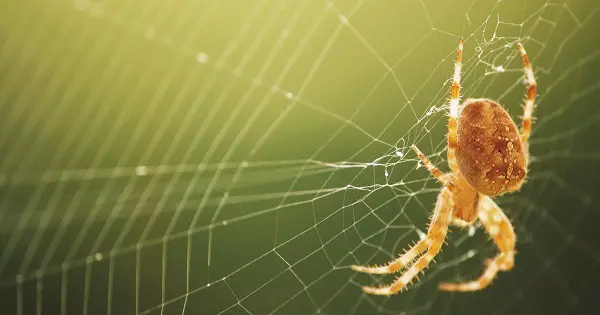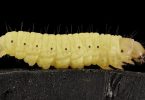Learn English with VOA (Voice of America). VOA Learning English and VOA Special English helps you learn English with vocabulary, listening, and speaking. In today’s lesson, we’re going to learn about What do Spider Webs and Guitar Strings Have in Common? Let’s get started.
Spider webs have something in common with guitar strings.
The long, thin strings on a guitar can vibrate. They move back and forth, or from side to side.
So do webs made by spiders. The lines of silk they produce can carry vibrations. This movement gives the small creature information about what landed on the web.
Spiders have eight legs and usually eight eyes. The animals build webs with their own soft, naturally-made silk. And much like playing the strings of a guitar, a spider can send out vibrations across its web over many different frequencies.
Scientists at the University of Oxford have shown how spiders control the tension of their webs. They do this to make use of the power of their senses.
Spiders catch their food, usually insects, in their web. They make small movements, which spread across their web. The vibrations can tell the spider what is there — maybe a possible mate, or something tasty to eat.

Beth Mortimer works in the Zoology Department at the university. She says the vibrations gives the spider details about what is caught in the web. They can tell the spider where that next meal is, and what it might be. But she says, vibrations are not just used to identify what is for dinner.
“But vibrations are also important in courtship, so lots of males will actually generate a very specific kind of a musical pattern which the females can use to determine not only that they’re a male, but they’re the right species, and whether she might want to mate with them as well.”
Mortimer adds that a spider make its own vibrations to find out the condition of the web.
How do the researchers know that? They used special equipment to send out laser pulses into the web of a garden cross spider. Then they used a laser to measure the very small vibrations, which spread through the web. They sent their own vibration to learn more.
“We were able to input our own vibration into the web, move this vibration around to different locations to work out how the spider is able to locate where vibration sources are coming from and how the vibrations change as they move through the web structure.”
Using computer models, the scientist could show how a spider can change the size of a wave vibration. The spider does this by changing the tension — or tightness — of the silk lines.
Mortimer says by controlling the tightness of the material, it lets the spider “effectively tune their web’s properties.” The spiders then can control how information is getting to them where they hang out in the middle of the web.
The research shows that spiders have a special ability to shape the physical properties of their self-made materials and creations. The scientists think that spider silk may have changed over time for this purpose.
And, Mortimer explains, in a way, spiders can move their silk threads, much like a musician plays the strings of a guitar.
“They are constantly able to monitor the tensioning on their webs by, they can kind of feel around with their legs, so they have a behavior where they kind of bounce on their webs slightly and sometimes they pluck the silk fibers as well. So they’re able to send out a vibratory signal into the web and they can monitor what comes back.”
Engineers might be able to learn a thing or two from spiders. This information could help engineers better understand how structures react to energy, and how vibrations affect a building.
I’m Anne Ball.
This story was written Deborah Block for VOA News. Anne Ball adapted it for Learning English. George Grow was the editor.
_______________________________________________________________
Words in This Story
vibrate – v. to move back and forth or from side to side with very short, quick movements
frequency – n. the number of times that something (such as a sound wave or radio wave) is repeated in a period of time (such as a second)
courtship – n. the behavior of animals that leads to sexual activity or the period of time when such behavior occurs
generate – v. create or make something happen
monitor – v. watch closely and keep track of
bounce – v. to move in one direction, hit a surface (such as a wall or the floor), and then quickly move in a different and usually opposite direction
pluck – v. to pull and release (a string on a musical instrument) with your fingers in order to make a sound




